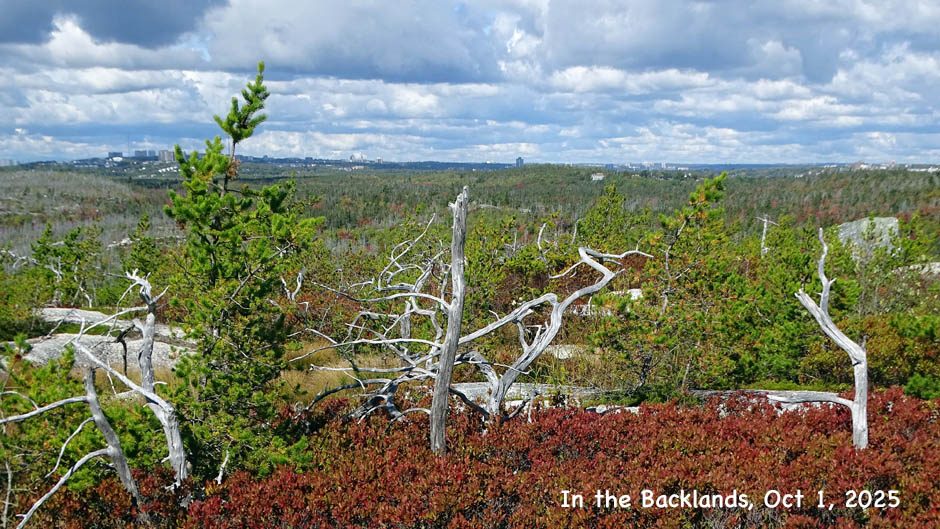Page created June 4, 2021; last updated on Aug 18, 2023.
| Related pages on this website Exotic & Invasive Plants
|
Several organizations have made attempts to coordinate information on invasive species in the province over the last several decades. Currently and hopefully, finally, this role is being assumed by the Nova Scotia Invasive Species Council. It was set up, apparently, in 2019 (the domain was registered on 2019-04-25; earliest website post June 2, 2020). From About Us
The Nova Scotia Invasive Species Council (NSISC) is a collaborative, volunteer-based group of individuals and organizations that aims to raise awareness and promote a coordinated response to the threat of invasive species in Nova Scotia. The NSISC builds on the experience of the former Invasive Species Alliance of Nova Scotia (ISANS), which was based at Acadia University from 2007-2012. The NSISC is a recognized provincial chapter of the Canadian Council on Invasive Species (CCIS) (https://canadainvasives.ca). Read more
NSISC has Fact Sheets for the following (in the order as presented on their website, by common name):

New Guidebook from NSISC. Released Jul 18, 2023. The Guide describes native alternatives to commonly used garden plants that are invasive in our region.
There is a downloadable Invasive Species Guide (49 pages, 32 MB) which includes descriptions for all of the species above. It also lists 35 species that are invasive elsewhere in N.A. that we should keep an eye out for in NS.
The Nova Scotia Invasive Alien Species (IAS) Guide by Alain Belliveau et al. 2012 and published as an MTRI document served as as an authoritative list in the not too distant past. It is no longer readily available. The terrestrial plant species then in that guide were
Norway Maple (Acer platanoides)
Oriental Bittersweet (Celastrus orbiculatus)
Glossy Buckthorn (Frangula alnus)
Common Reed (Phragmites australis ssp. australis)
Scots Pine (Pinus sylvestris)
Rugosa Rose (Rosa rugosa)
Under Species to Watch:
Woodland Angelica (Angelica sylvestris)
Common Hawkweed (Hieracium lachenalii)
Common Valerian (Valeriana officinalis)
Purple Loosestrife (Lythrum salicaria)
Knotweed Species (Polygonum cuspidatum & sachalinense)
Multiflora Rose (Rosa multiflora)
Giant Hogweed (Heracleum mantegazzianum)
Reed Canary Grass (Phalaris arundinacea)
Garlic Mustard (Alliaria petiolata)
Dog Strangling Vine (Cynanchum rossicum & louiseae) was cited under under “Species Plaguing Other Parts of North America, now confirmed to be present in NS (above).
Nova Scotia Invasive Species Council on iNaturalist
Interactive Map and Lists for all of NS
Comment (dp): 142 species are listed including many that in my view belong in the category “exotic” but not “invasive”, e.g. Black Knotweed, Creeping Buttercup…
Kristen Noel: Invasive Species a threat to Nova Scotia’s Biodiversity
Nature NS Webinar on YouTube, Feb 2023. “It is widely accepted that invasive species are a huge threat to biodiversity worldwide. In Canada alone, more than 20% of our species at risk are threatened with extinction by invasive species. This presentation will explain what invasive species are, how they get here, and what we can do to help! We will also highlight some invasive species that are currently plaguing Nova Scotia, along with some of the projects that the Nova Scotia Invasive Species Council (NSISC) is working on.”

From FBLWA website
New Boot Brush Station Installed at Bluff Trail Entrance
Post on FBLWA website, Oct 18, 2023″Board Members Harry Ward and Ken Donnelly teamed up last weekend to install the first of several new boot brush stations to be placed at entrance areas into the Five Bridge Lakes Wilderness Area. Each boot brush unit stands waist-high on an adult and holds a heavy brush at its base that’s designed to clean footwear by removing seeds, spores and other debris that could carry and spread invasive species.
Related: Boot Brush Stations: Are They Effective? On wwwplaycleango.org/, Aug 12, 2021
